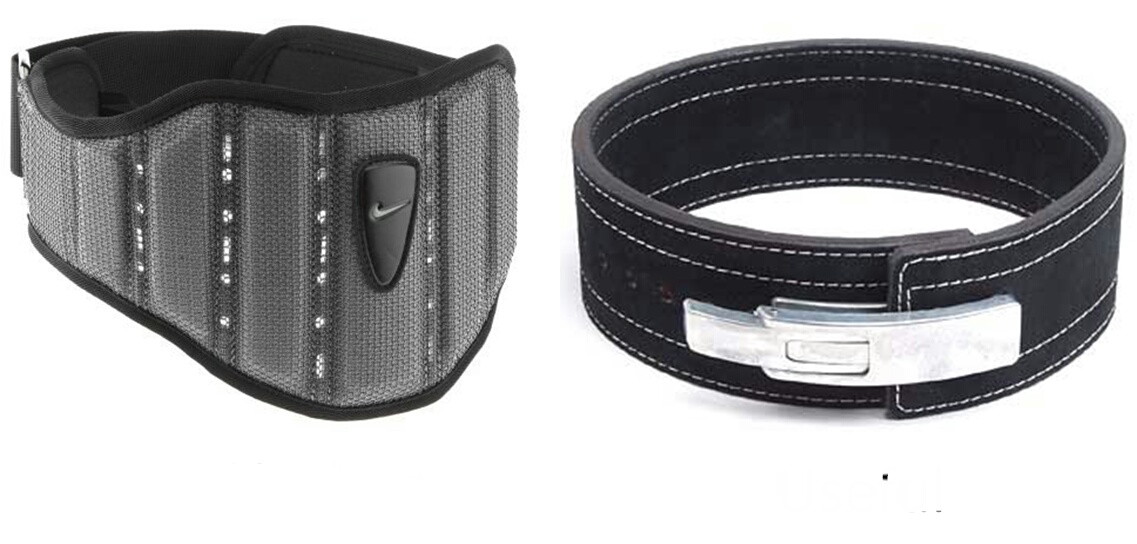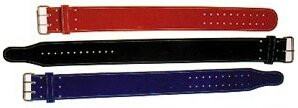The merit of powerlifting belts
 |
 |
There are few things more comical than guys at the gym wearing powerlifting belts while doing exercises like preacher curls. One can't help but to assume a profound distortion in self perception characterizes such guys. Feeling like Thor while lifting like Peter Pan.
The advent of lifting belts, however, was inspired by sincere interest in improving muscular force output and spine durability while lifting. Since the beginning of physical culture it's been realized that more weight can be lifted with less back pain when holding the breath. Exercise science then clarified that increased intra-abdominal pressure, during breath-holding and tense abdominal muscle contraction, amplifies neuromuscular output while stabilizing the spine.
Have your own strength amping trick? Click here!
To further capitalize on the increased strength and durability gained from high intra-abdominal-pressure (IAP ), lifters pondered how to increase IAP. It was eventually discovered that breathing techniques/abdominal strengthening, and lifting belts further amped IAP/force-output/durability.
Now before you start trying to increase IAP with a vengeance, make sure that high IAP isn't dangerous for you. High IAP induces high blood pressure while it's done and can also exacerbate other conditions. Once you've established that IAP can be exploited safely, choose a belt. that suits your needs.
Now with/without the belt, begin utilizing and continue to utilize the techniques that forge high IAP. Namely focused breathing while lifting and well-rounded core work; as only with the continued strengthening of IAP is optimum lifting belt use possible. So, in essence, turn your core into an internal lifting belt and use an external belt to further increase IAP.
What to look for in a belt?
If you're planning on competing in powerlifting, make sure the belt you choose meets powerlifting guidelines.
Beyond the guidelines, fit, comfort, and ease
of use are very important. As far as fit
is concerned, anticipated changes in waist size should be considered; you don't want to find that your belt no
longer provides support with a change in waist size. Comfort of a lifting belt should be felt
in all positions of all your lifts; no chaffing or cutting! Ease of use usually lies in how easily you
can fasten, tighten, loosen, and release the belt.
Again, remember, with and without the belt to continue to increase IAP potential with power breathing and core work.
Focused/Power Breathing
Power breathing is essentially breathing in a manner that maximizes IAP during the rep portion where peak muscular tension is needed. The abdominal muscle tension generated by power breathing during heavy exercise is like squats rivals that of any traditional ab exercises. As such, power breathing should be the primary means by which the internal powerlifting belt should be built.
So how does one power breath? Most of us already do it; take, for example, when you squat you take a deep breath, descend, then exhale through the sticking point on the way up. While most of us power breath this way already, everyone can still improve how they currently power breath.
To augment the aforementioned power breathing with/without a powerlifting belt, exhale through tightly pursed lips while using all of your core muscles to maximally compress the intra-abdominal cavity. This action will subject your entire core to strength building tension and provide an internal powerlifting belt that will stabilize and maximize force for any lift with which it's employed!
Core Work to Support IAP
Traditional core exercises. while good, can use some modification for better contribution to IAP. Maximizing IAP requires intense contraction of many core muscles in unison and traditional core work rarely entails such intense unified contraction. With some modification, however, typical core exercises can become more beneficial to increasing IAP.
Among the pro-IAP modifications that can be made to typical core exercises include power breathing, engaging the adductors, and pulling in the umbilicus with transverse-absominus (TVA) activation. During leg-raises as an example, one could power breath with TVA activation while squeezing a medicine ball between the shins.
Powerlifting belts in a nutshell
Though use of a powerlifting belt looks ridiculous during low-force endeavours using toddler weights, the increased muscle force facilitated by high IAP can be maximized with powerlifting belt use. It's advisable, however, that continued forging of internal belt strength be practiced in order to optimize external belt use. Furthermore, competitive lifters should ensure their belts meet regulation while all lifters should choose belts that fit, are comfortable, and easy to use.
Have a method for amping rep power?
Share it here!
Know a secret for instantly higher muscular force and recruitment? Pay it forward here and submit some info and pics!
Your
best strength amping technique
Click below to for more strength amping methods from other visitors to this page.
Split squat from the bottom up Not rated yet
Setting the rack supports at a level just below the point the barbell would be when the back knee is down,position yourself under the bar with durable …
Split squat starting from the bottom up! Not rated yet
For split squats, adjust the rack pins to a point just below where your knee touches and assume position under with upper back against the bar, perform …